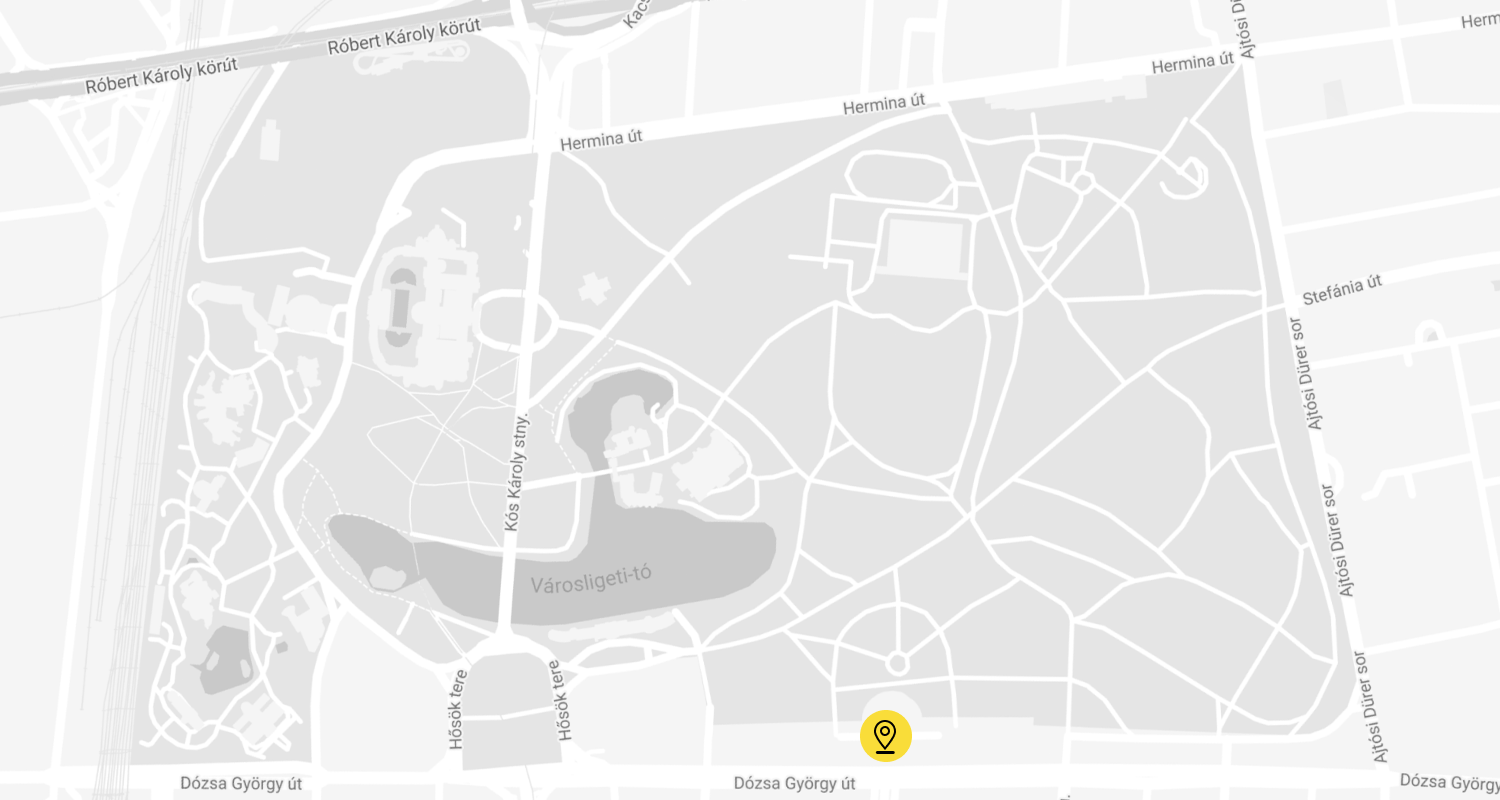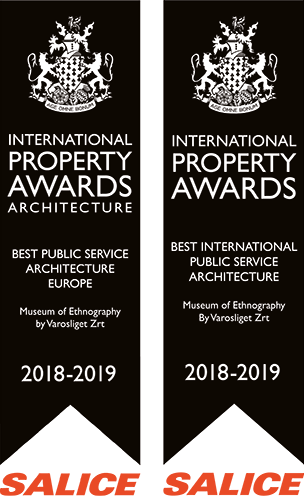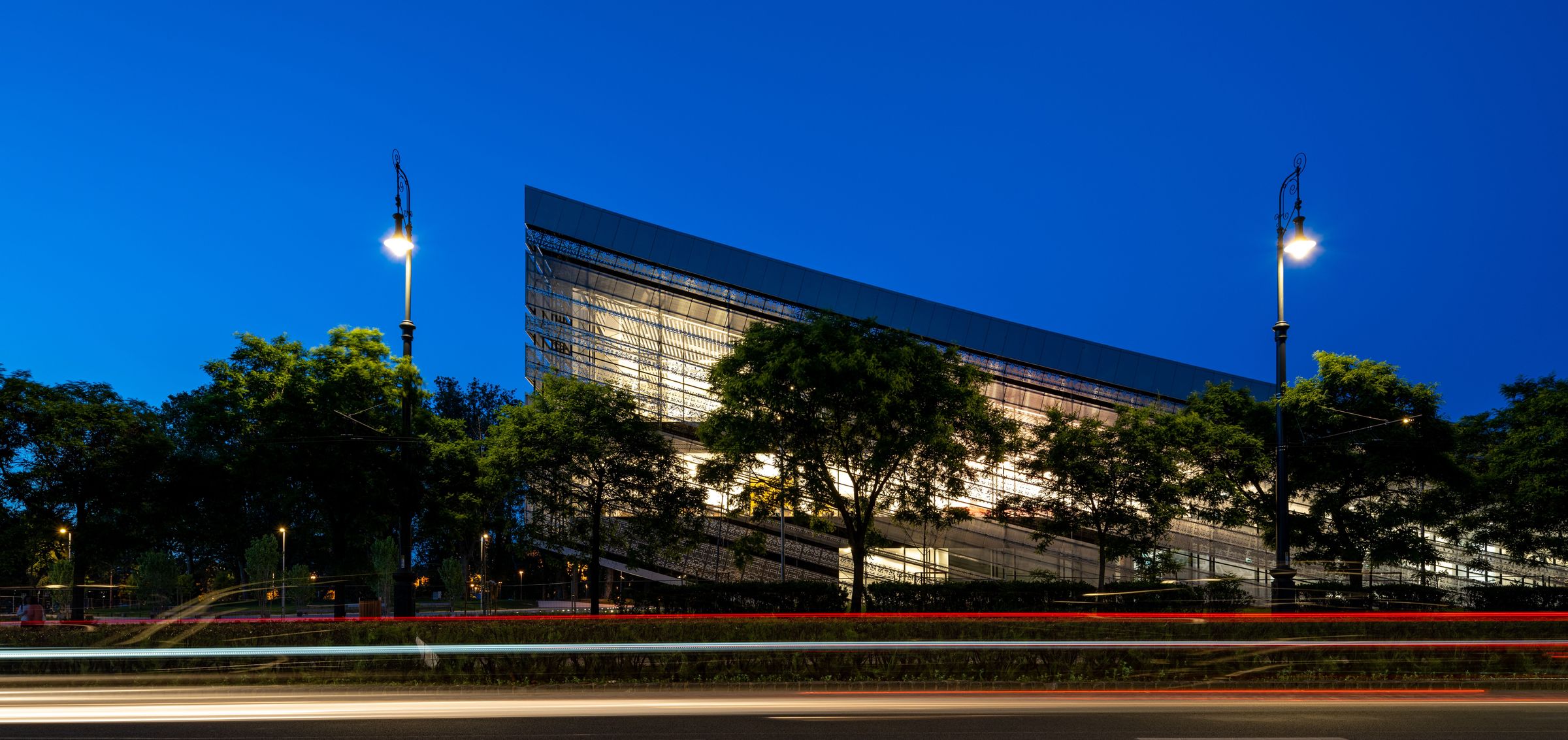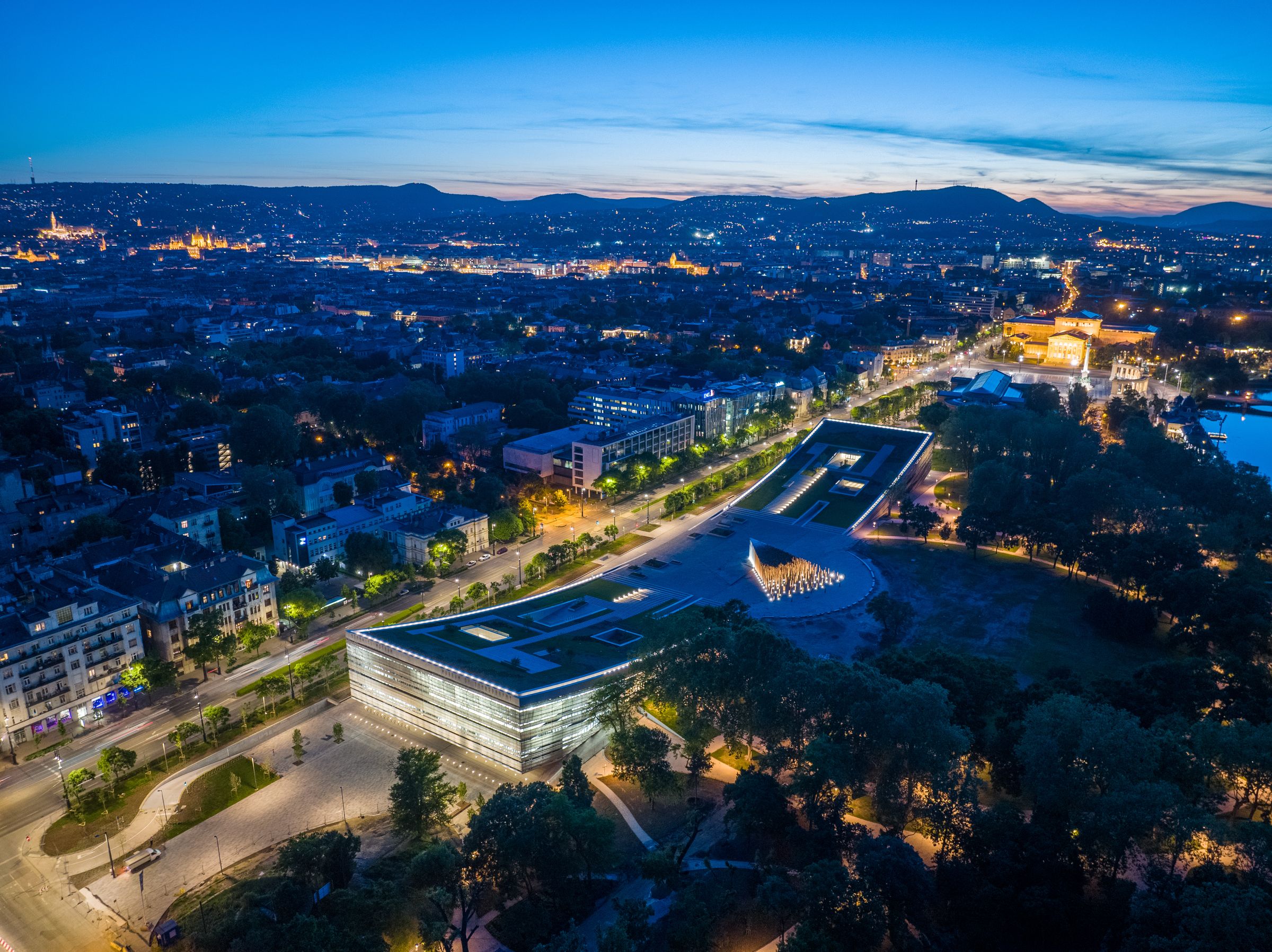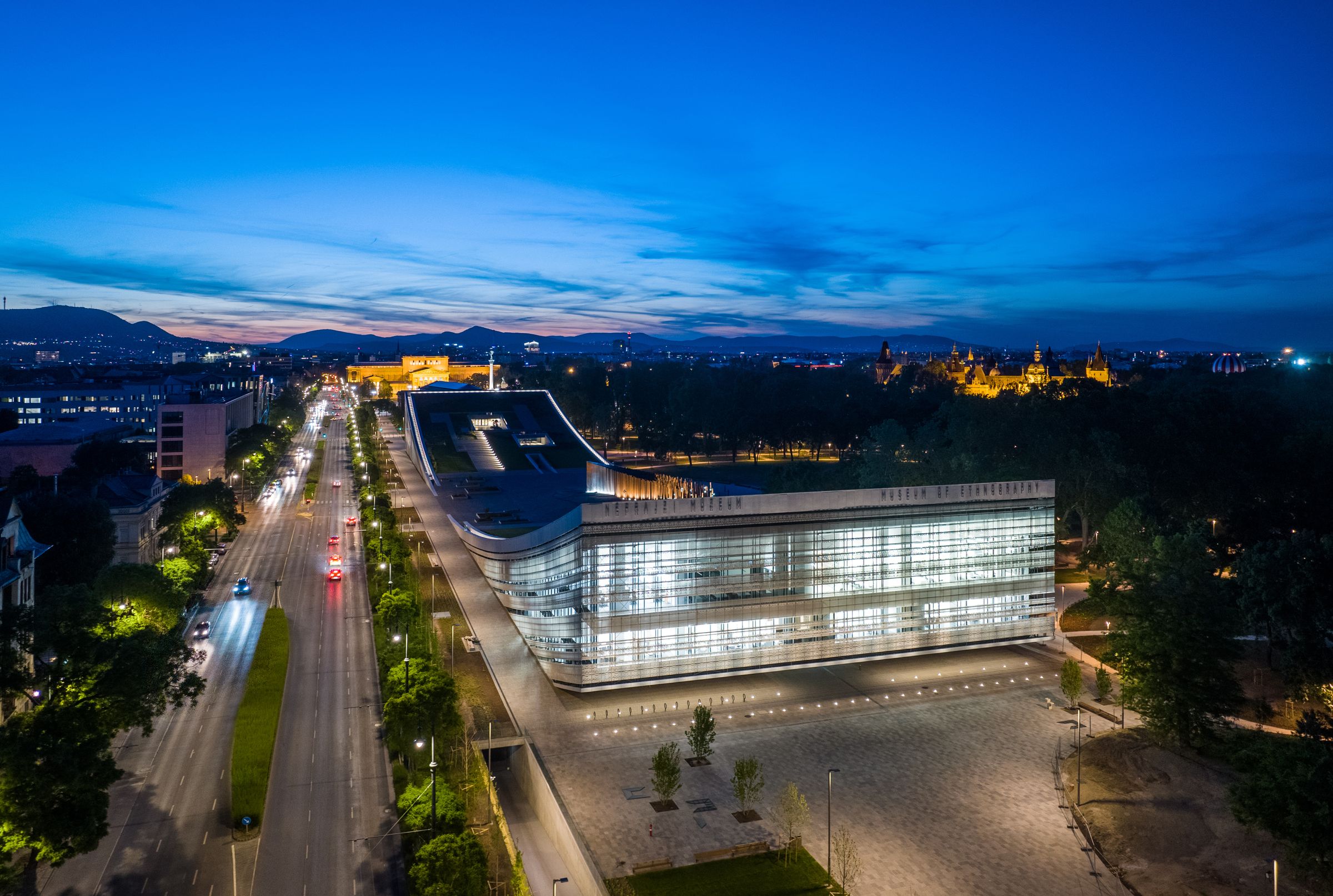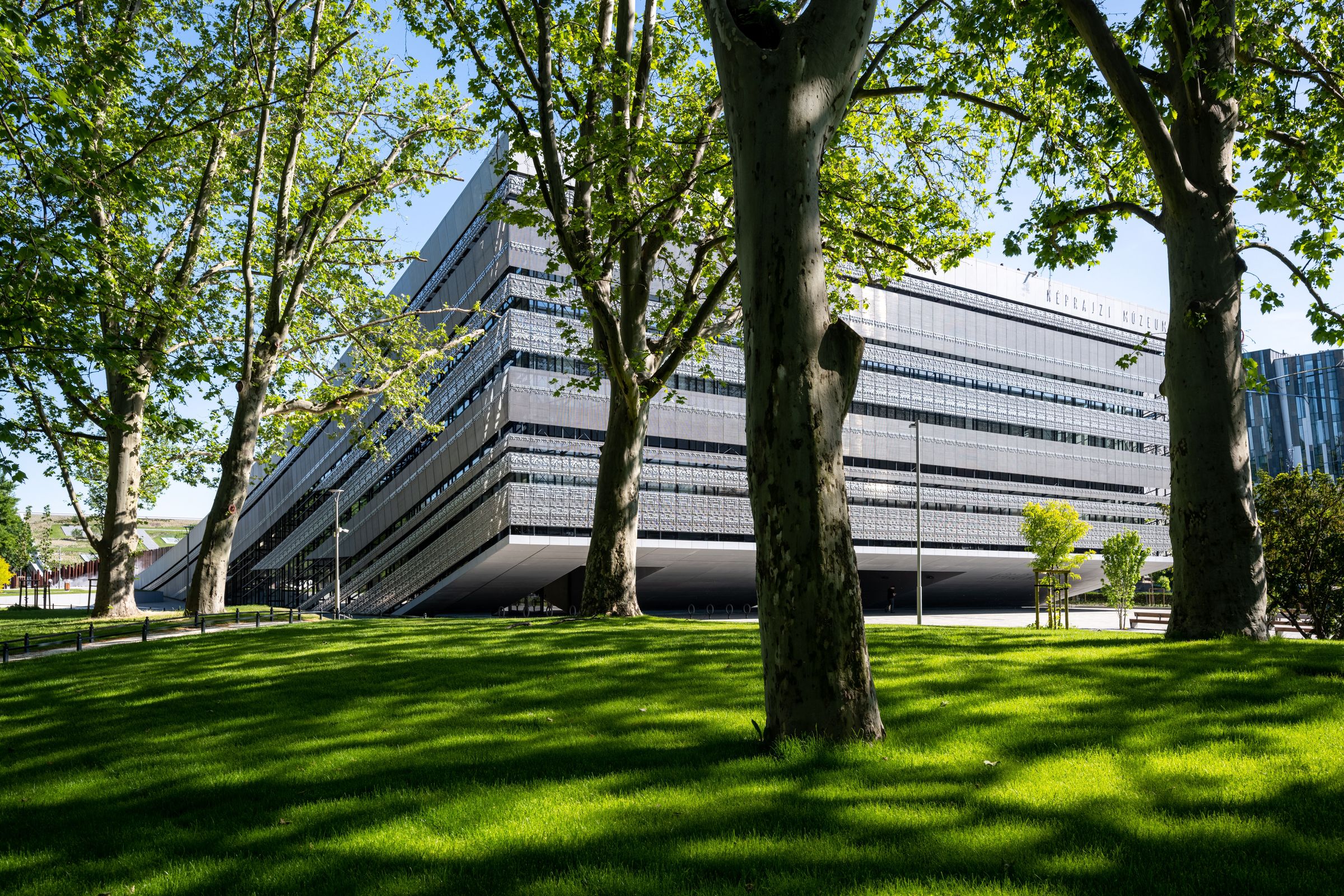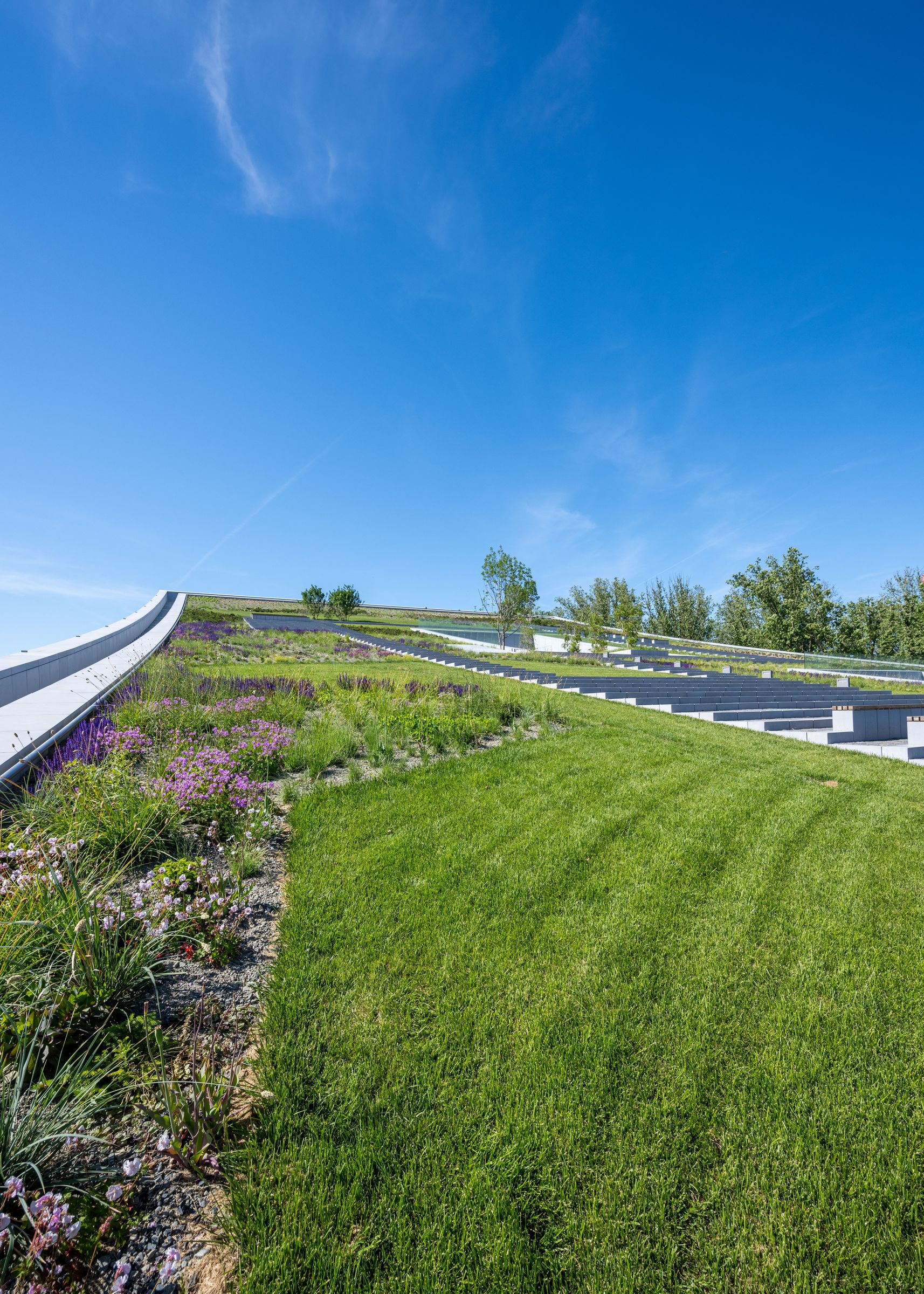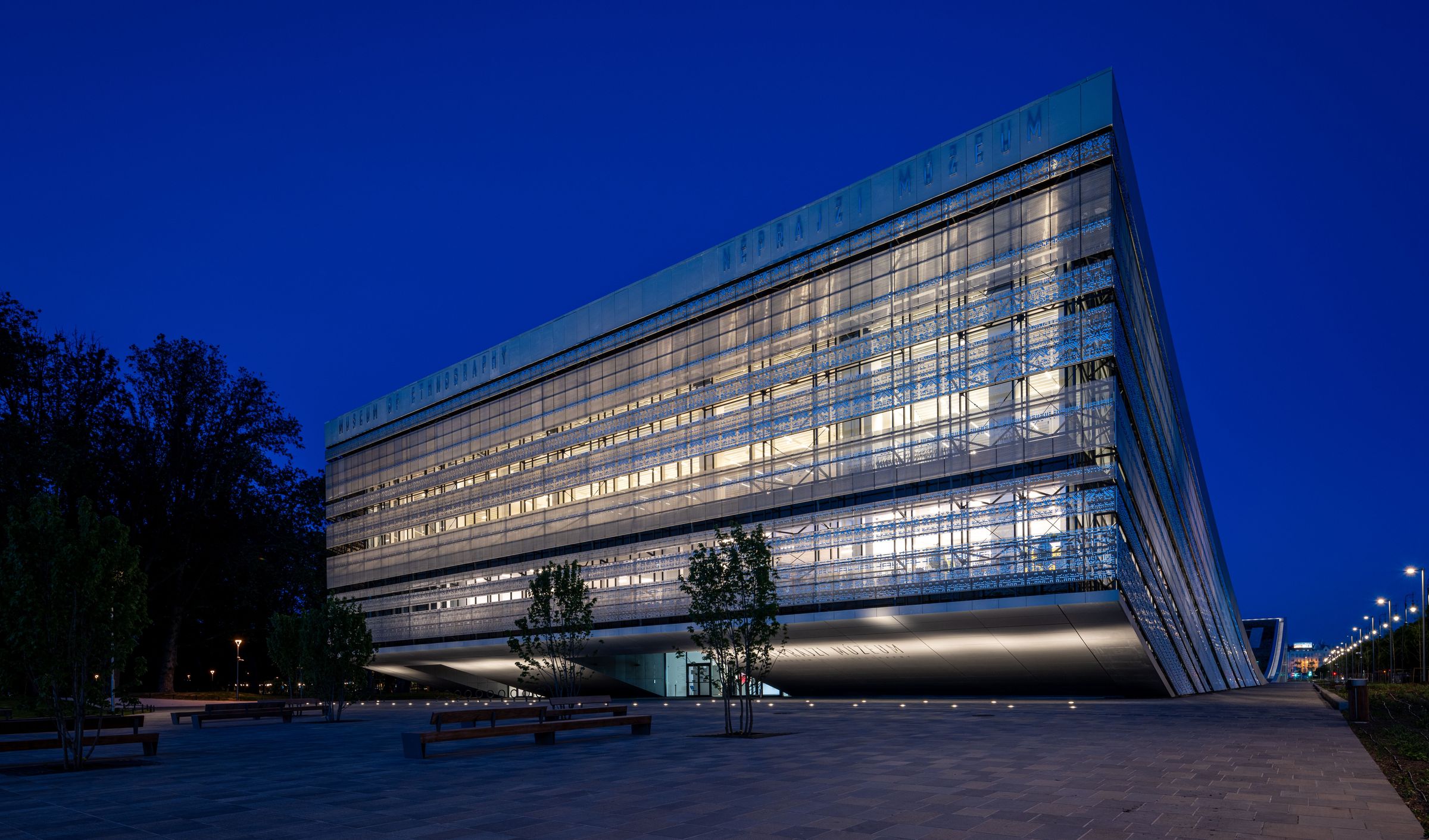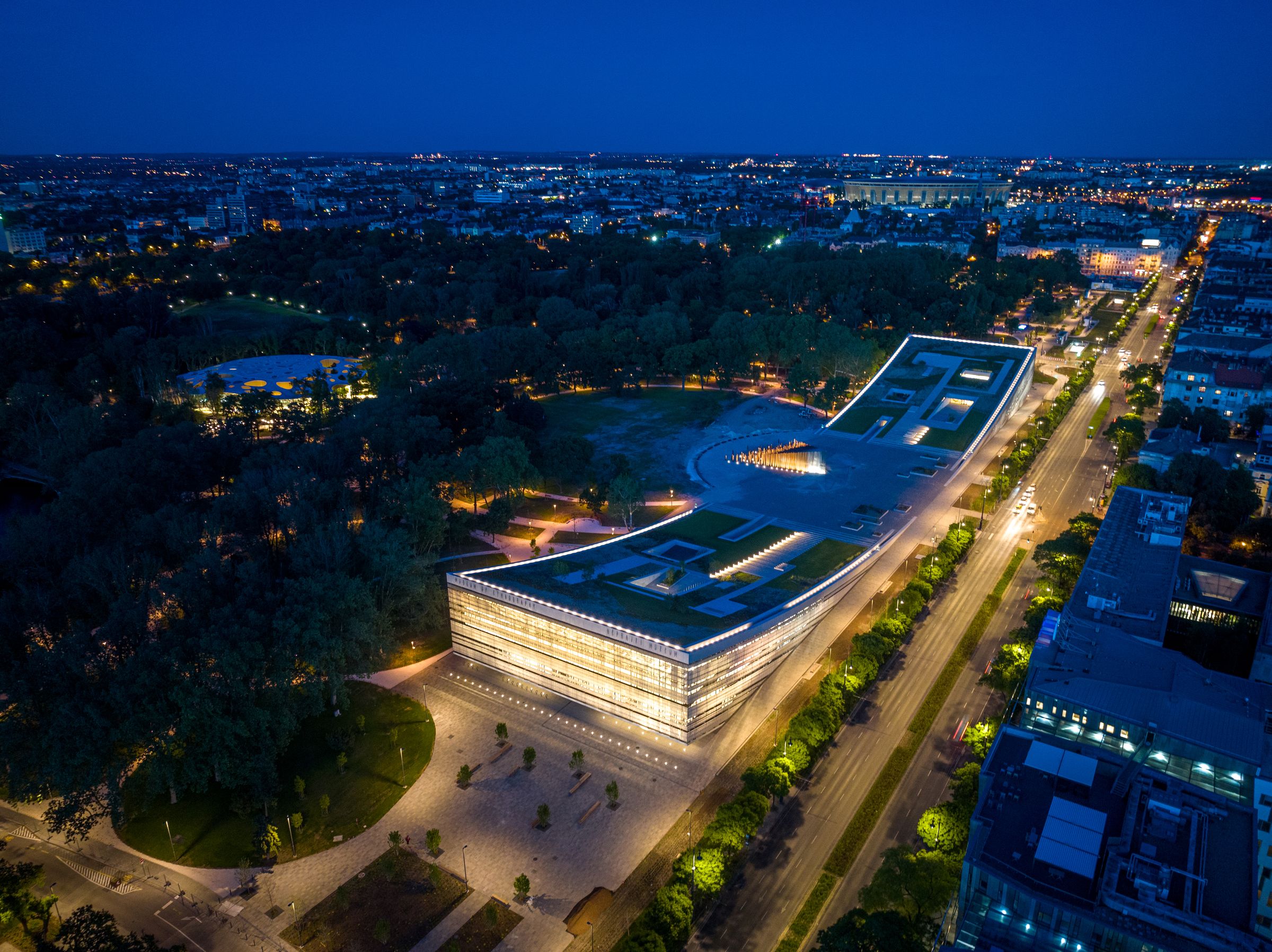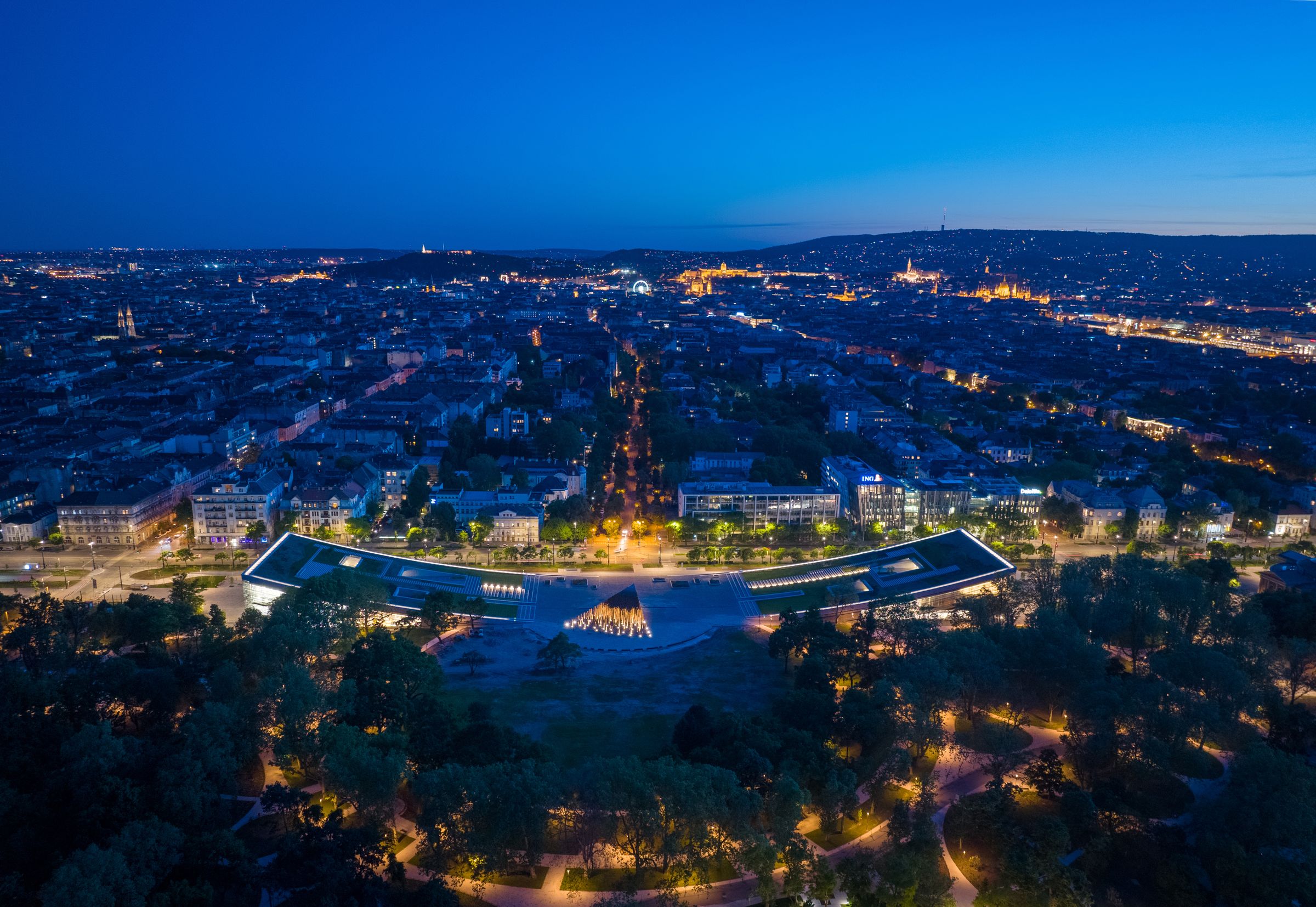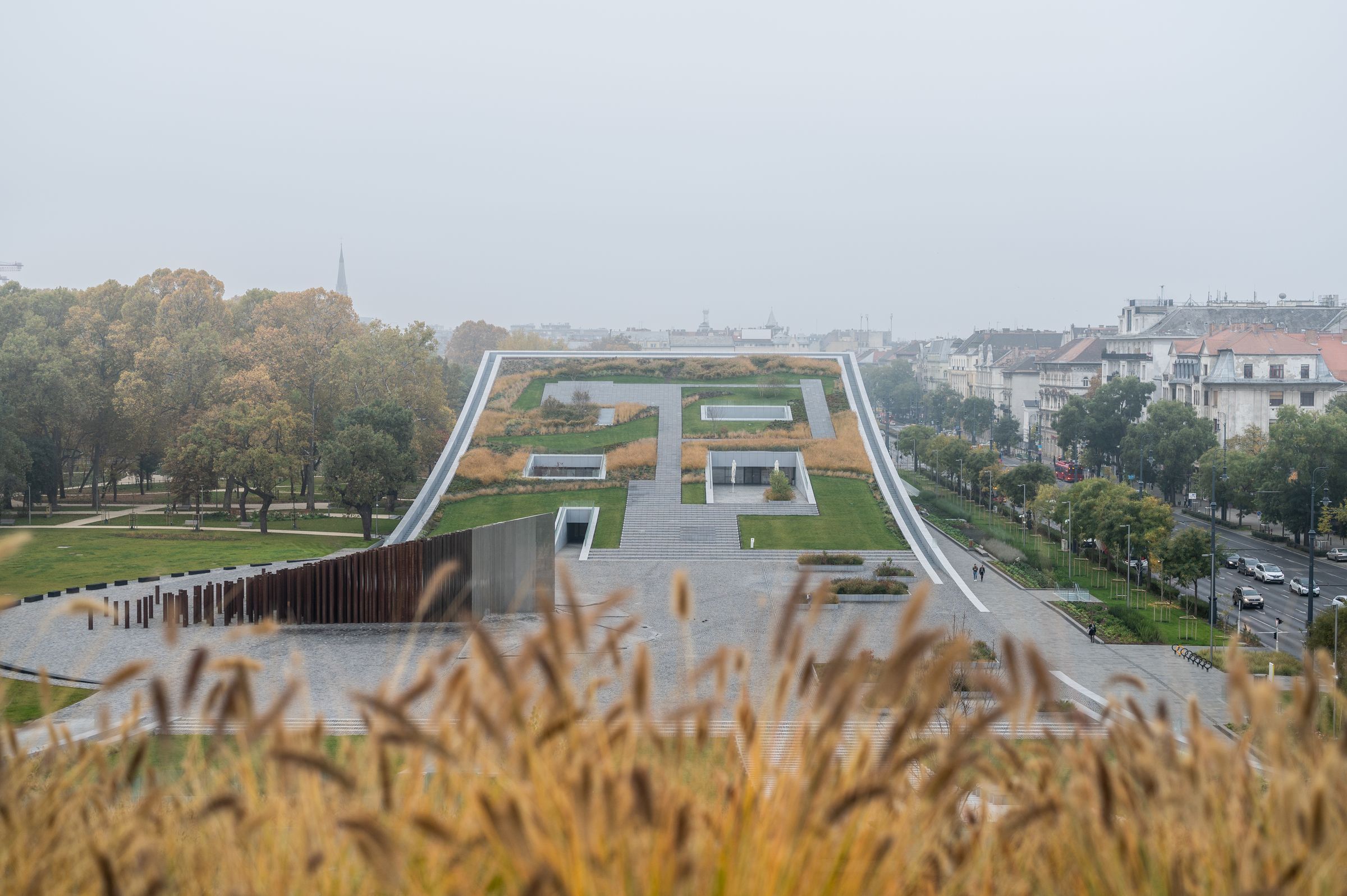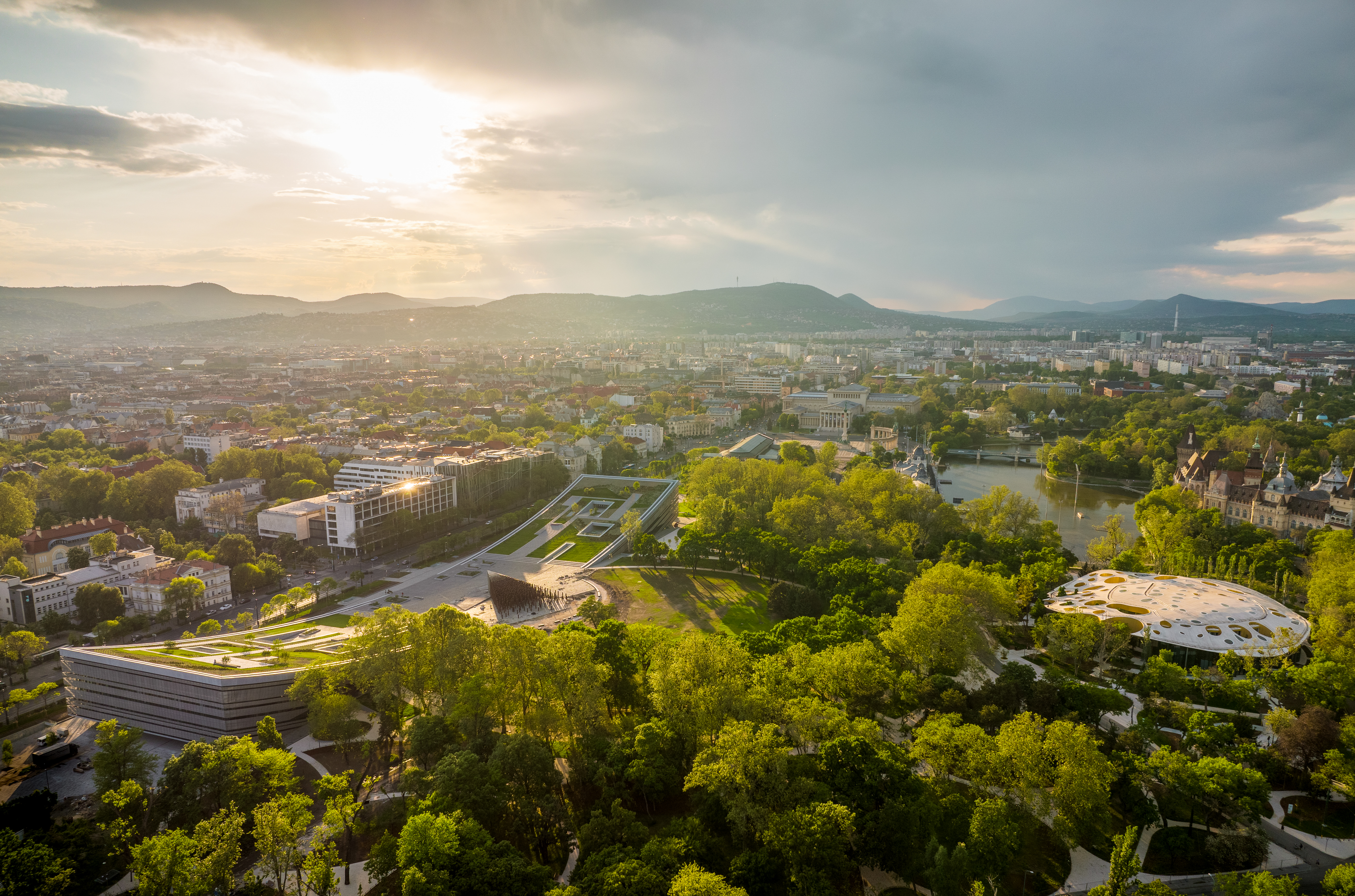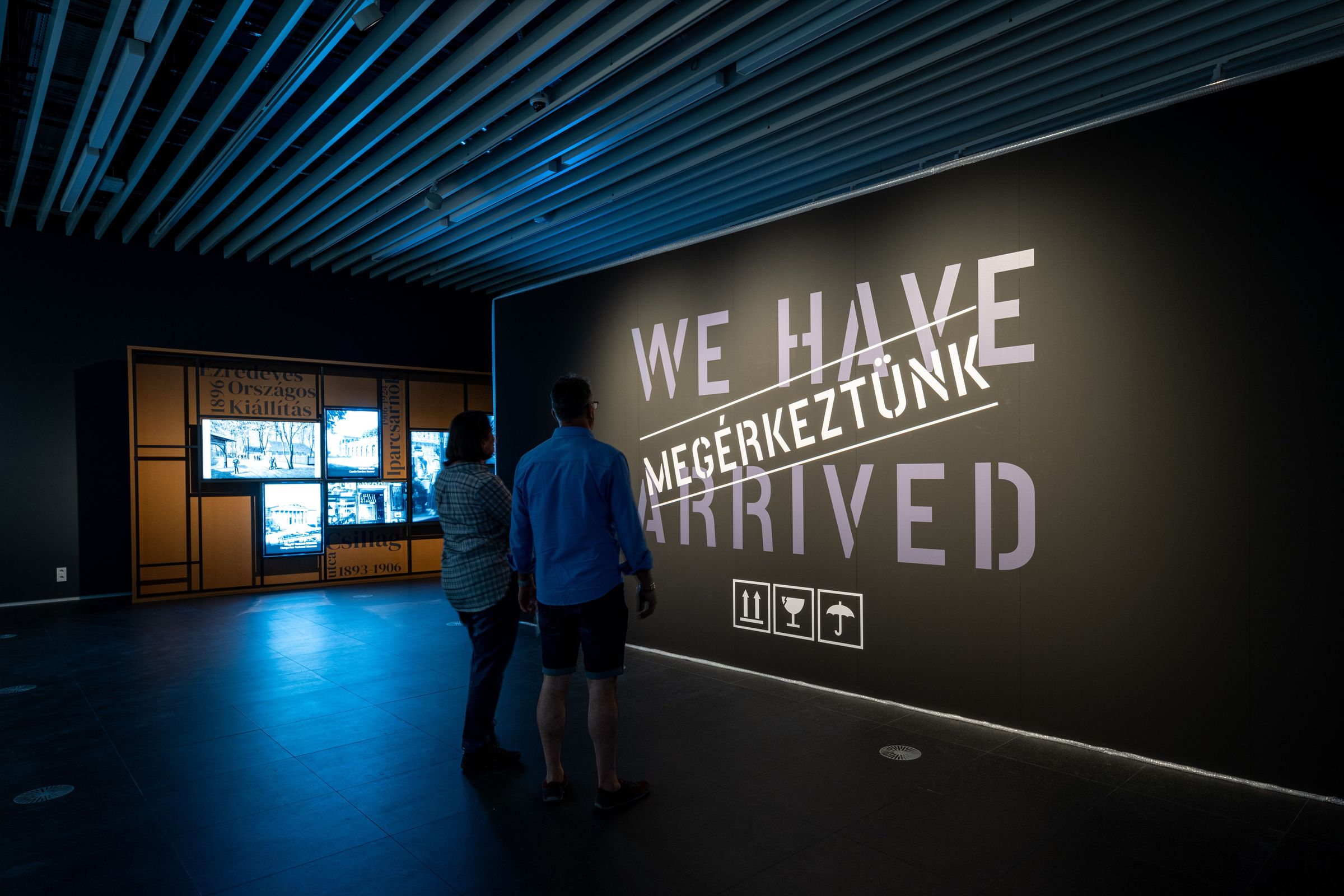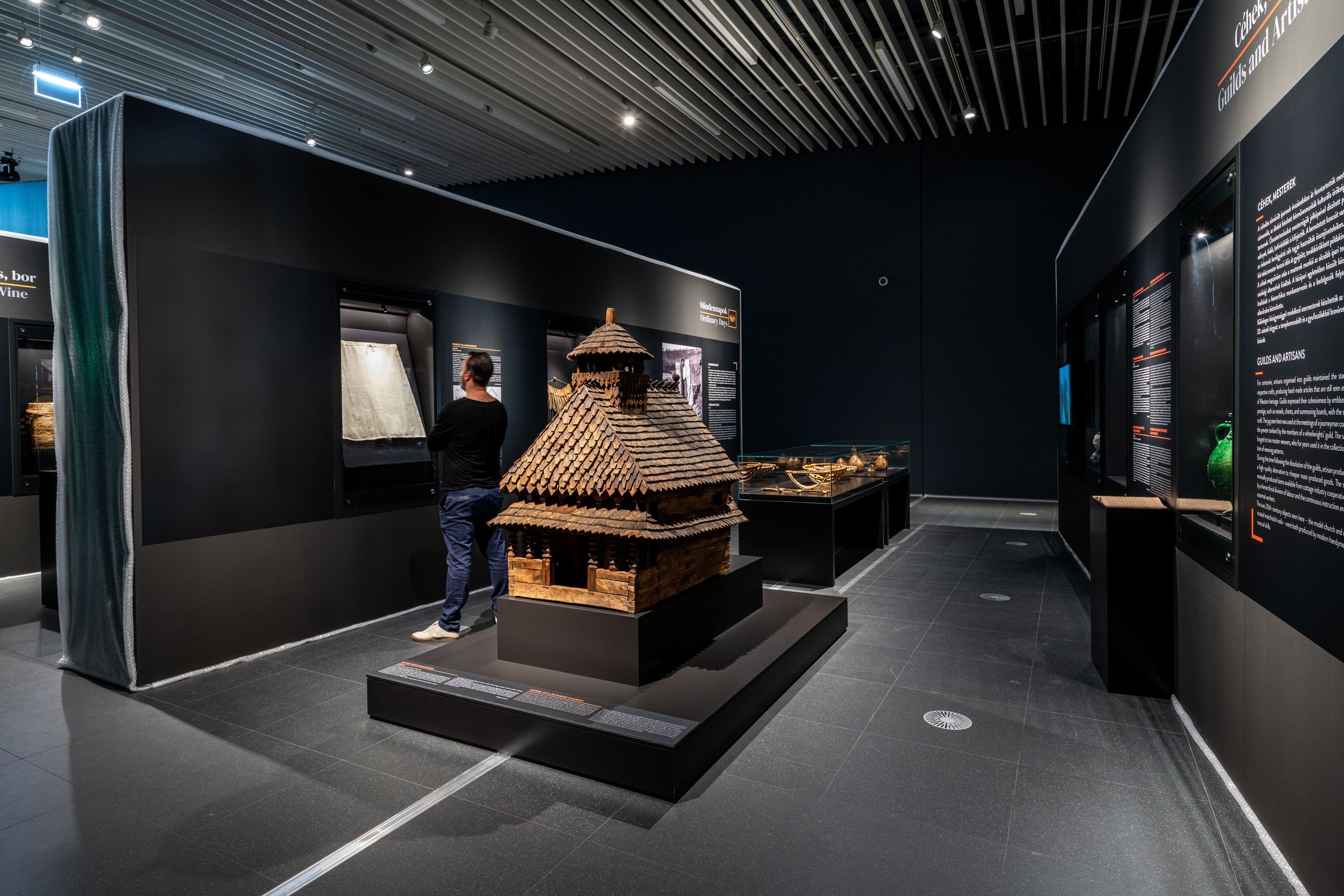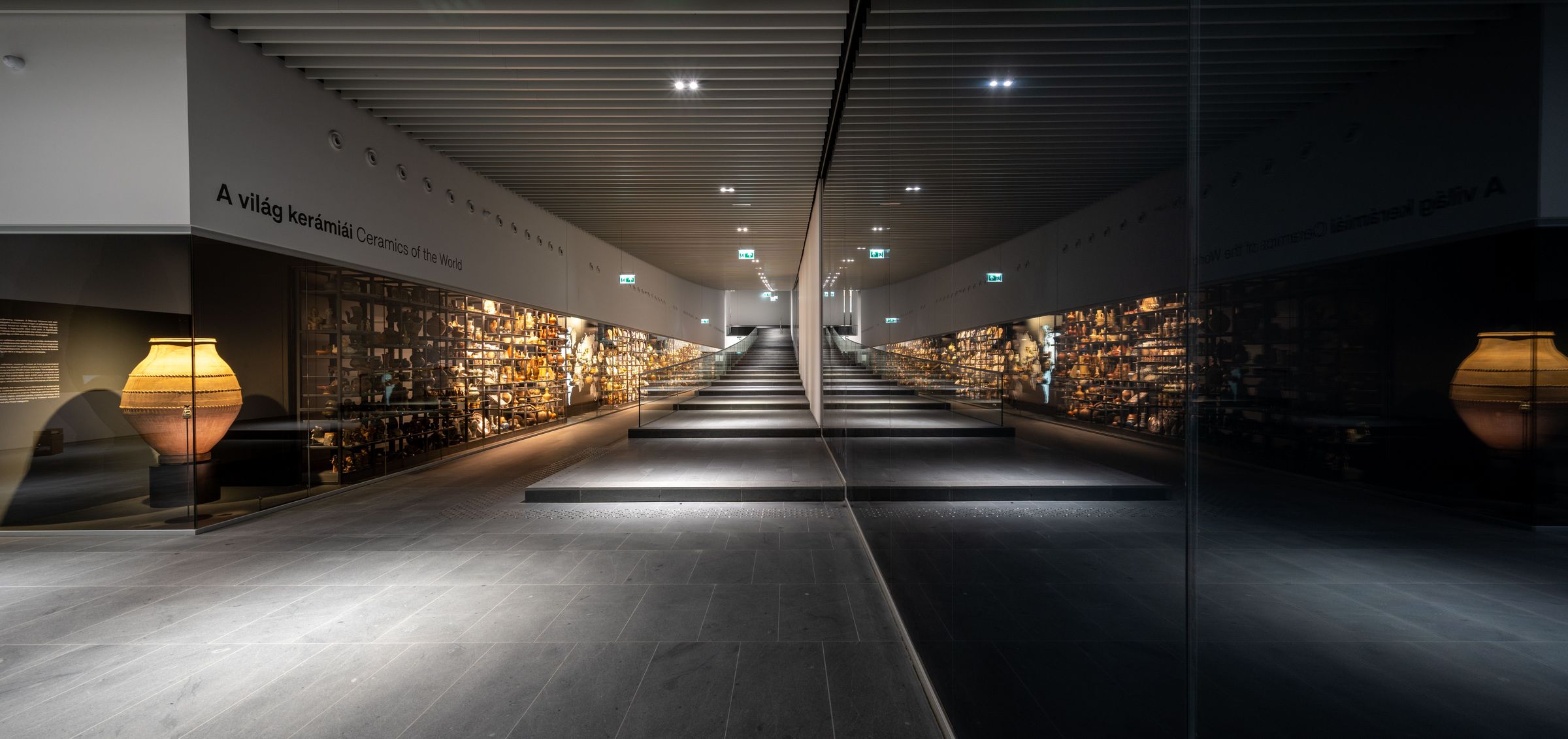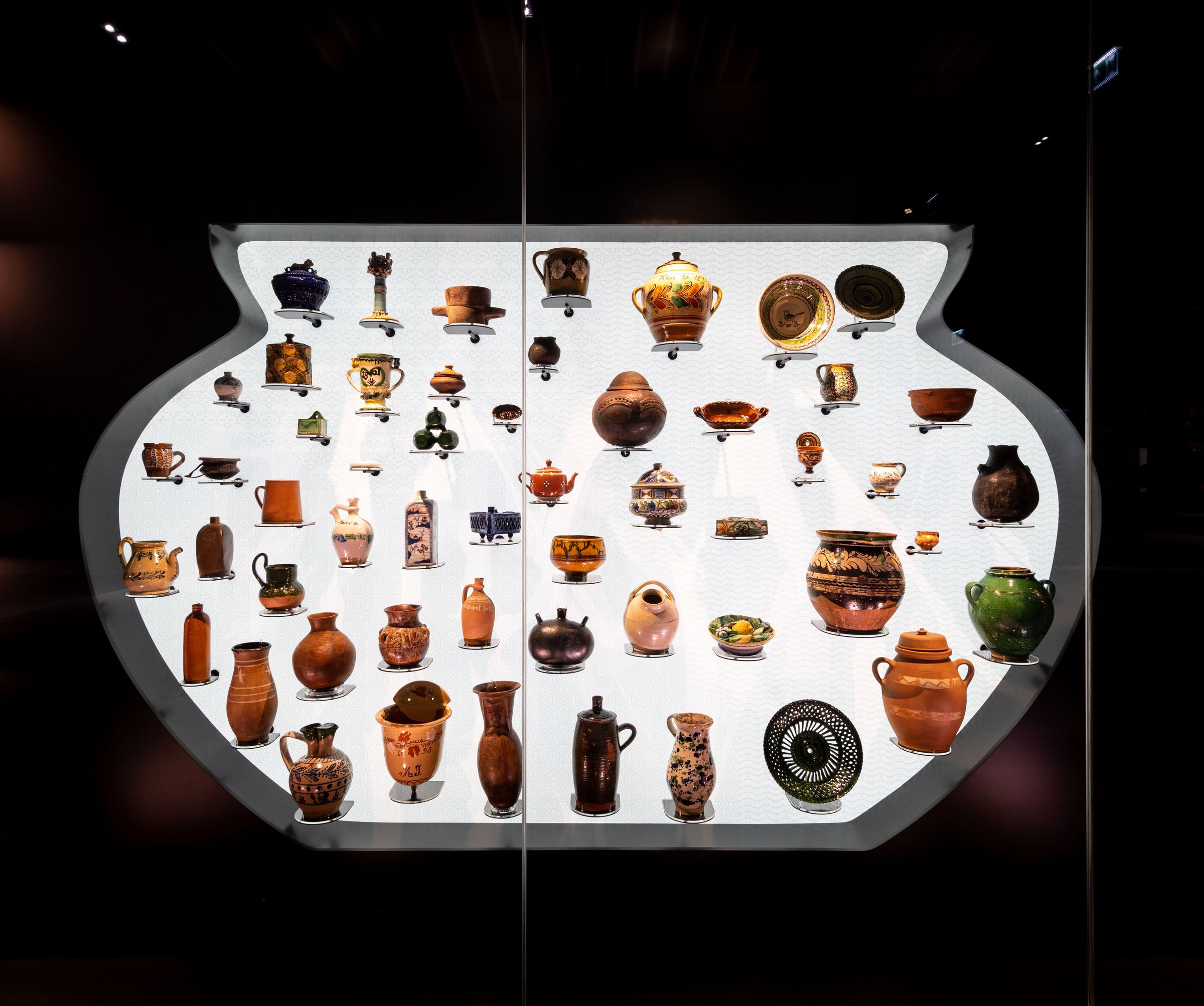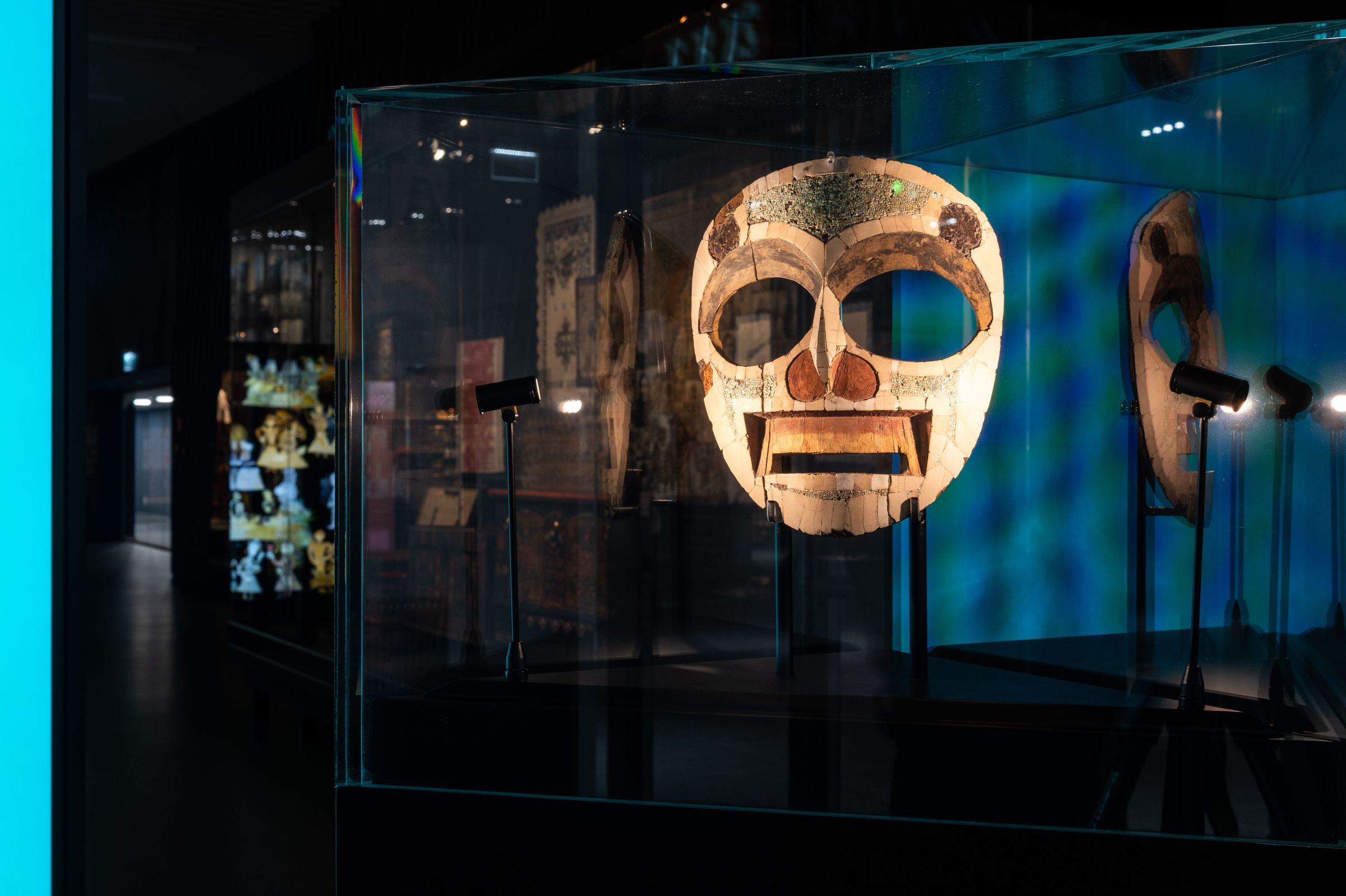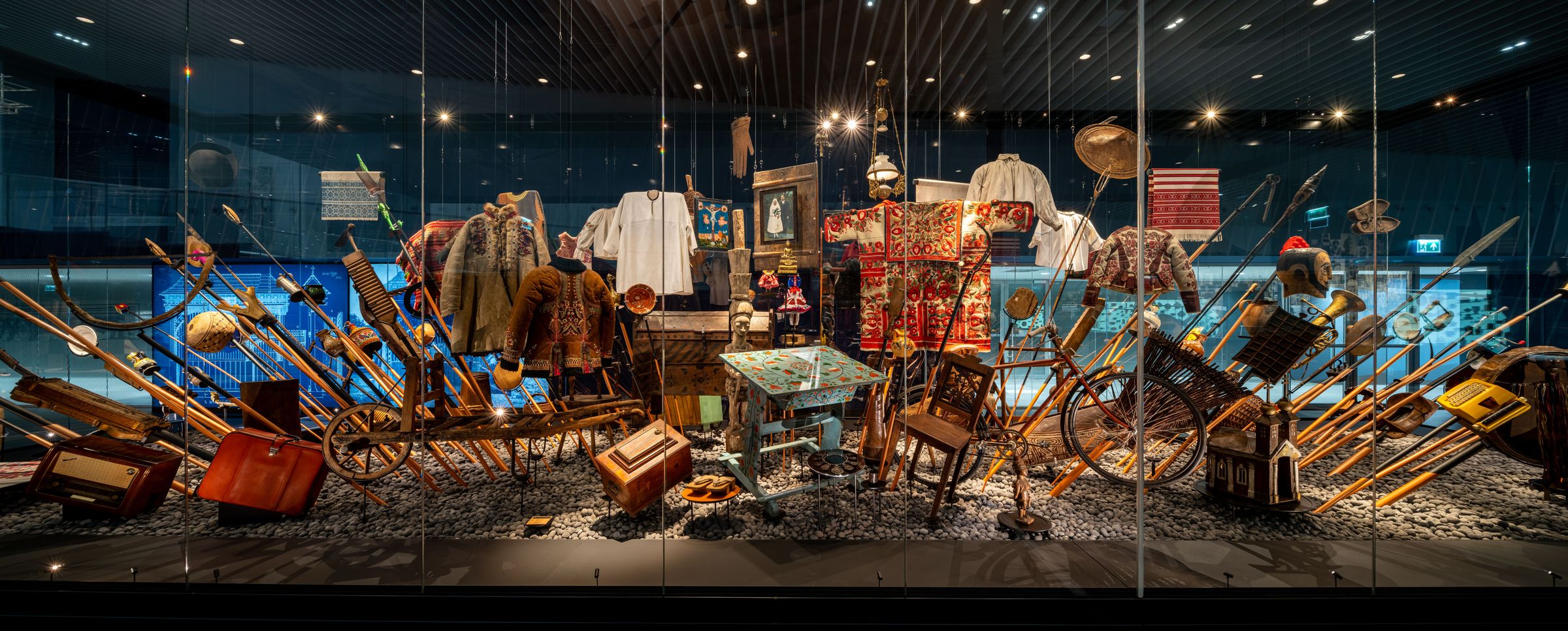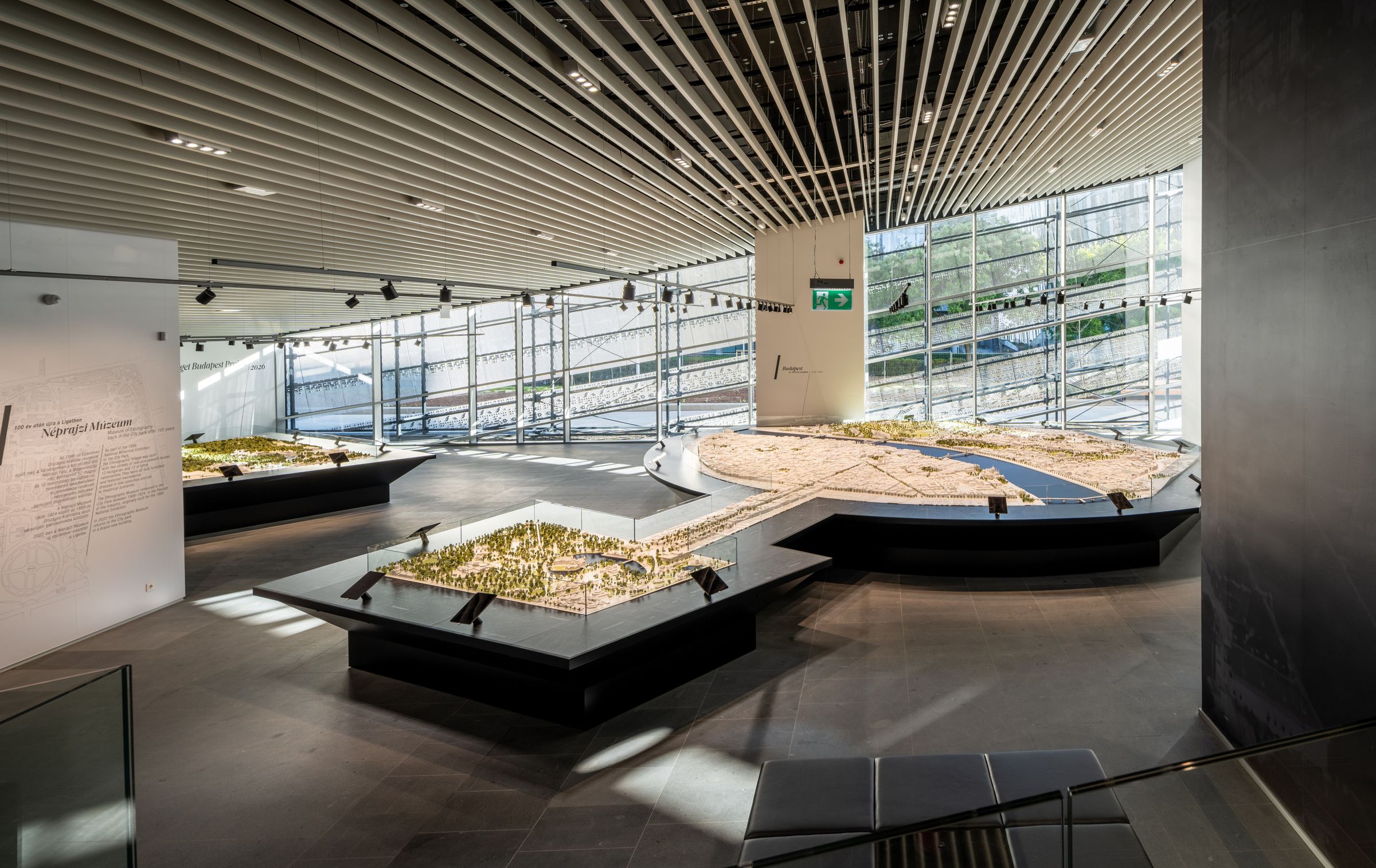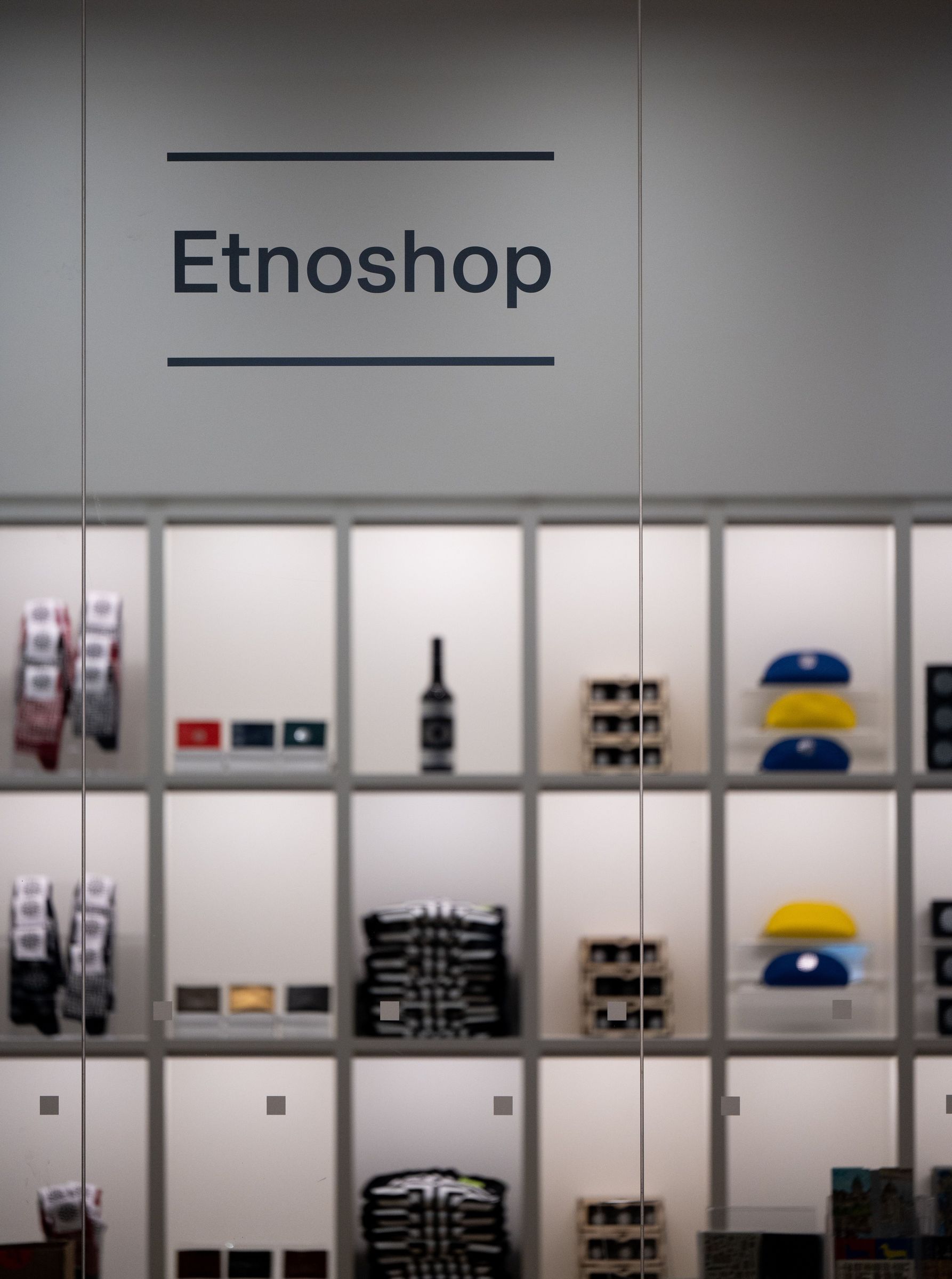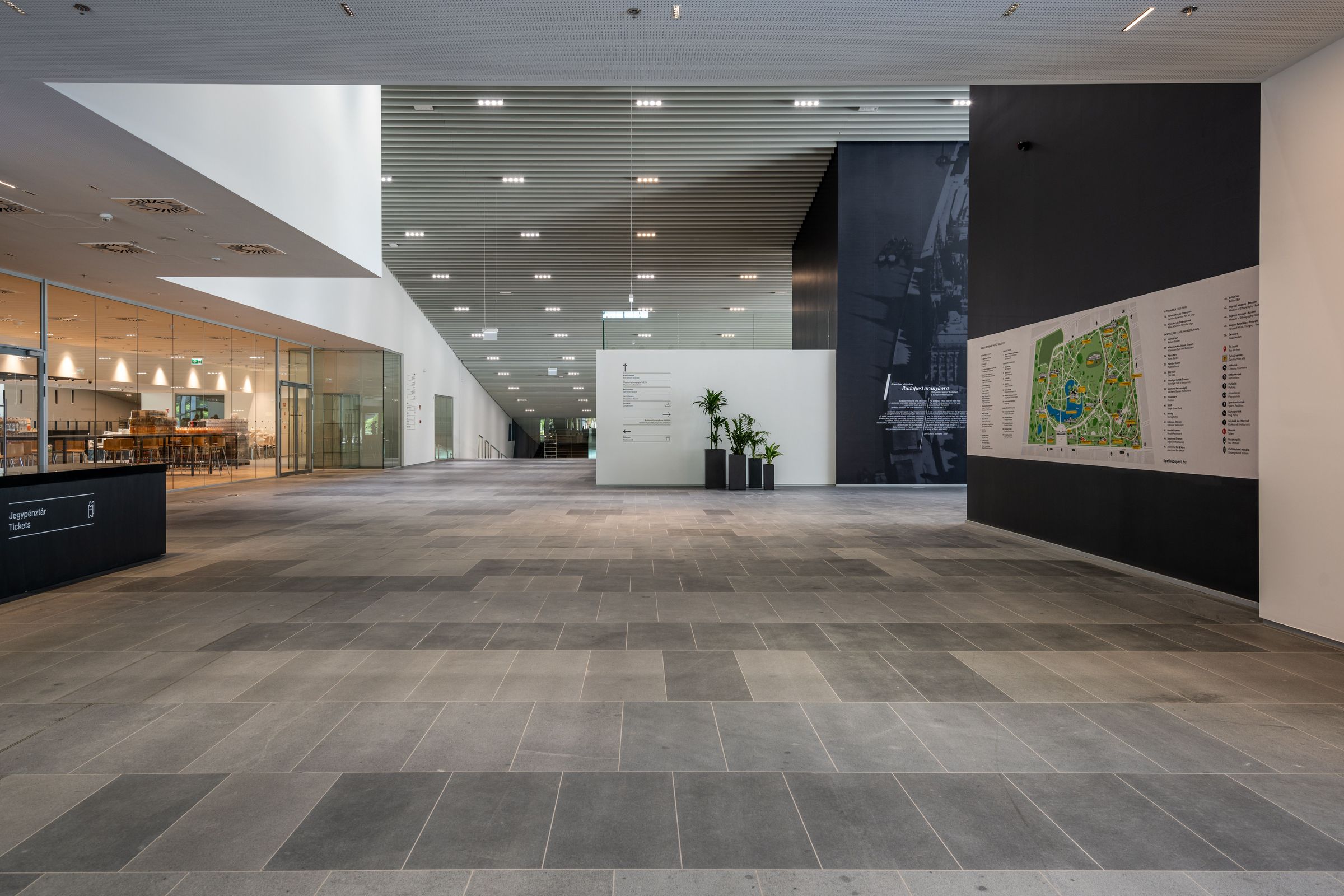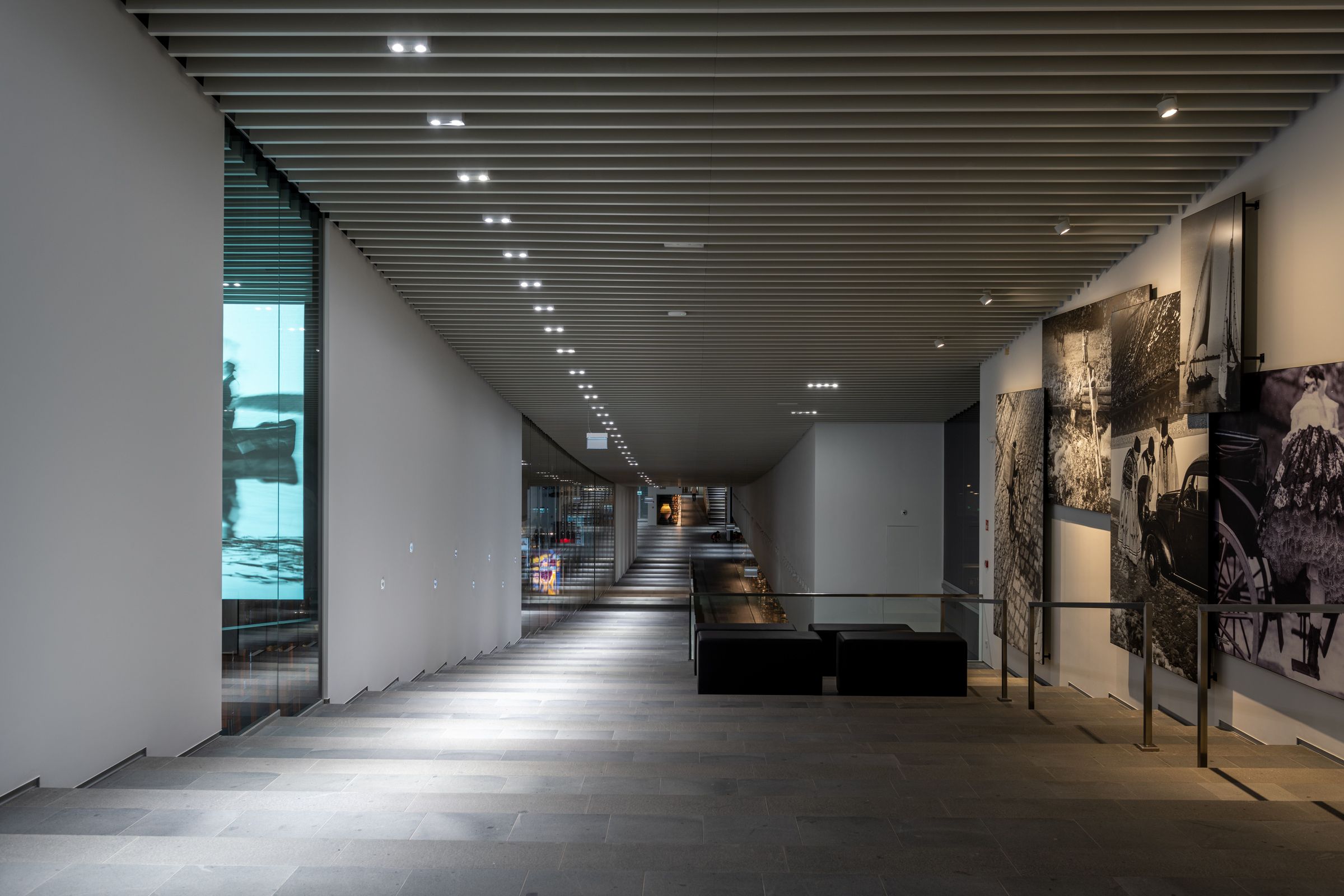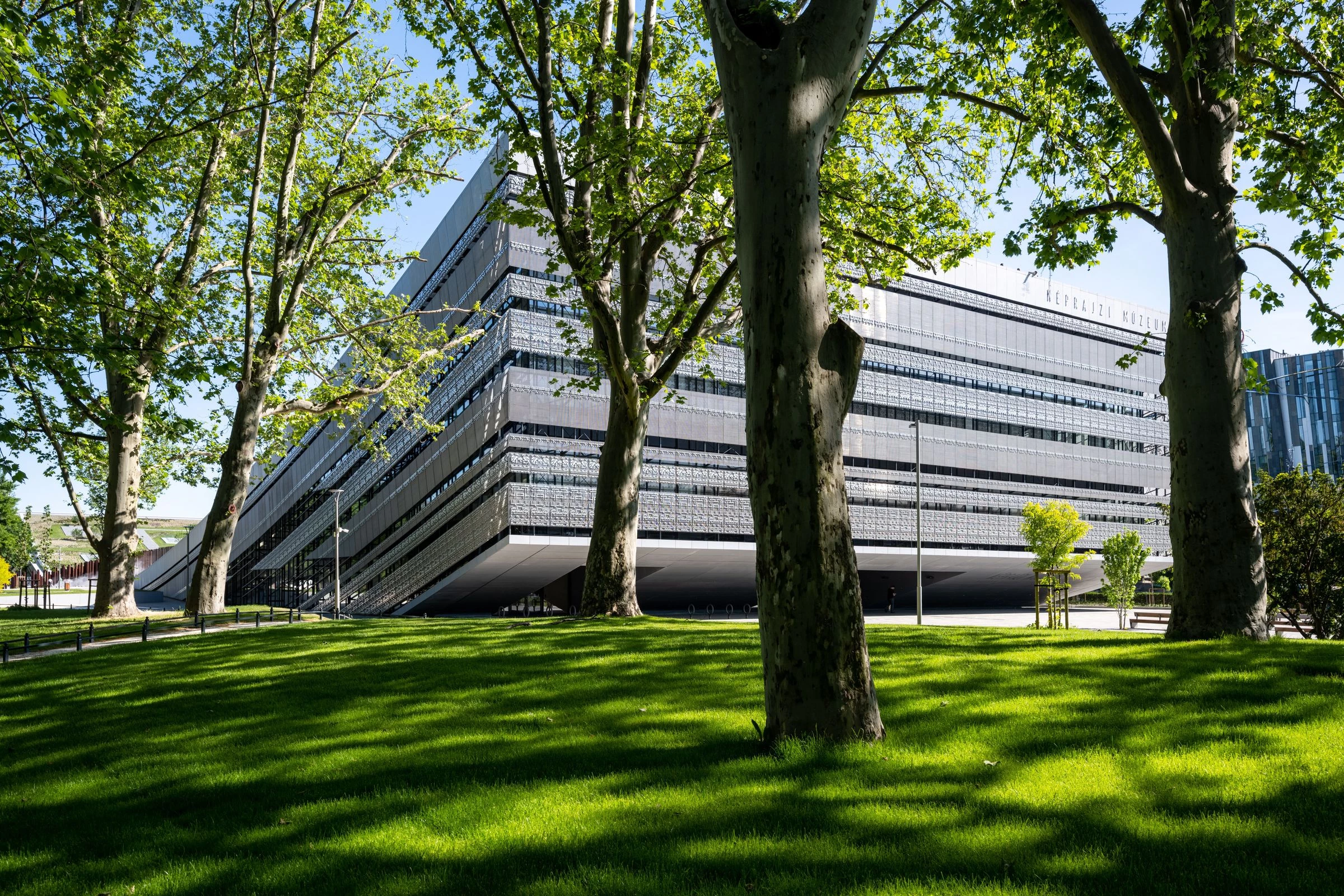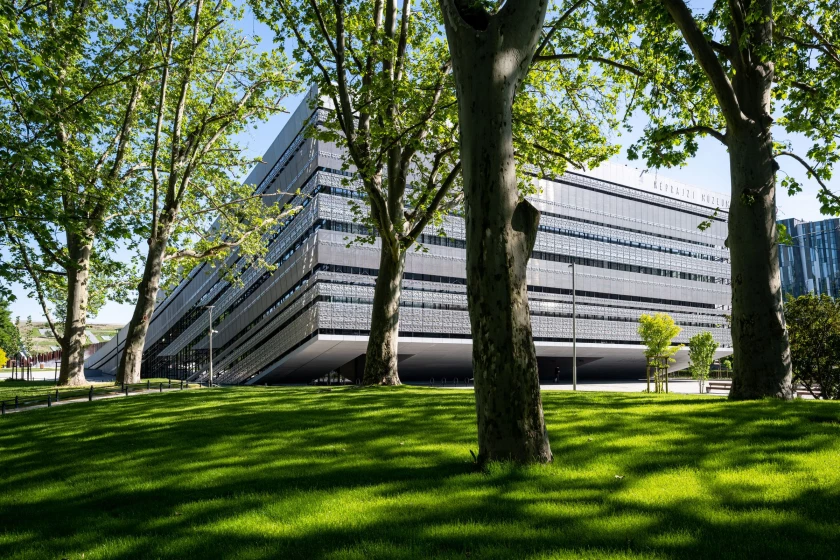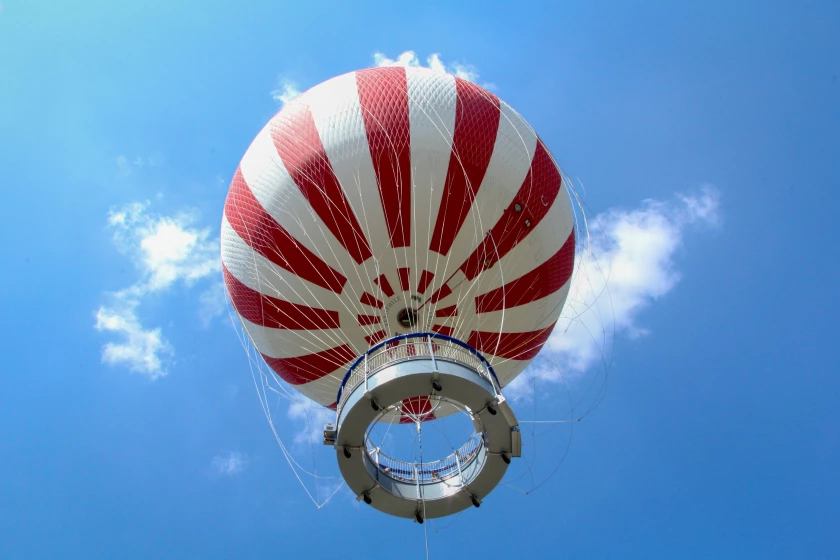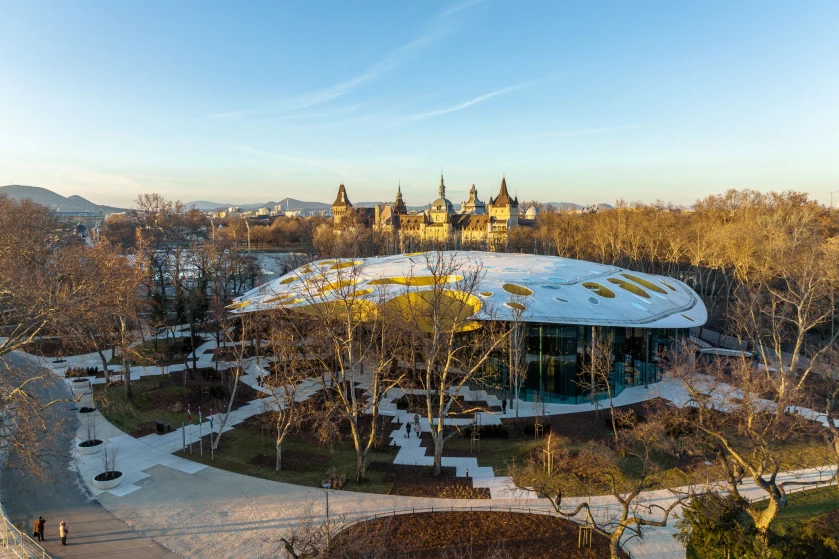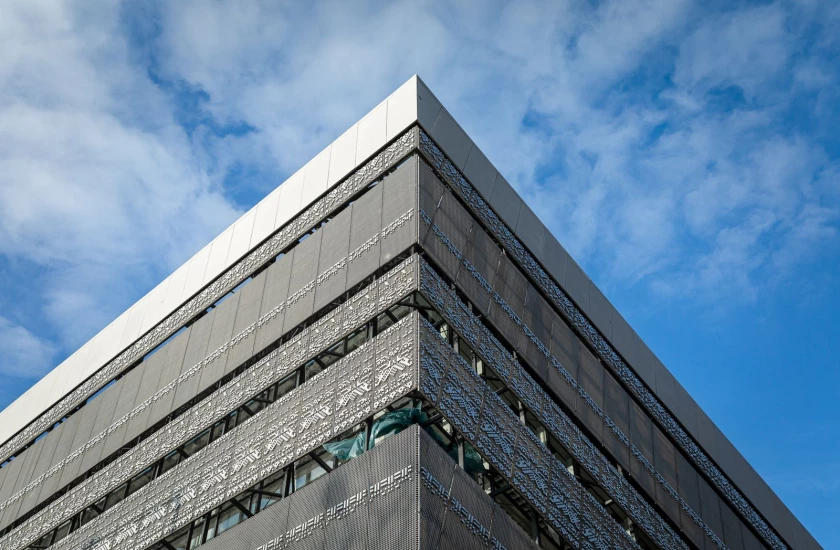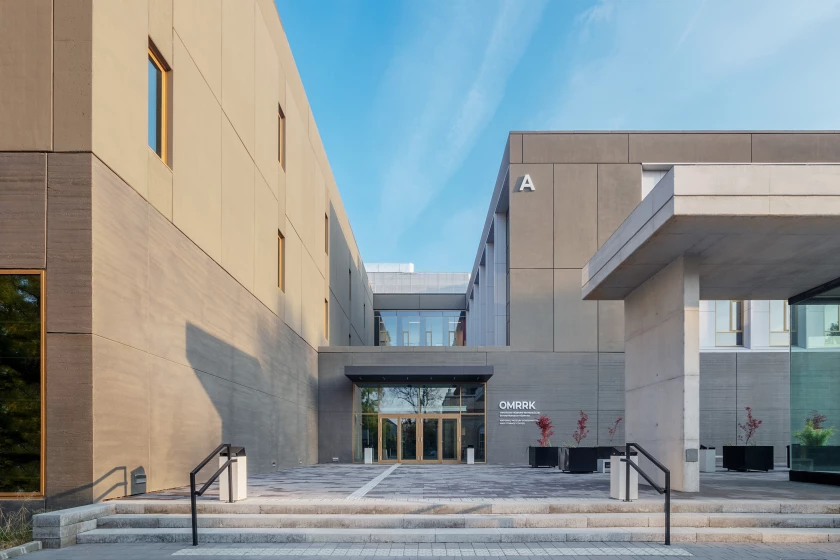The new Museum of Ethnography is located at the end of the Városligeti fasor [City Park Lane]. Before Andrássy Road was built, this area traditionally served as the gateway to the City Park. However, with the construction of Felvonási [Procession] Square in the early 1950s the site first became a place for demonstrations during the communist era and then – right up until the commencement of construction work on the museum in 2017 – was used as an above-ground car park accommodating over one and a half thousand cars on an area partially concreted-over and partly paved with basalt blocks. This is now in the past as the new building of the Museum of Ethnography was built on the site of the former parking area and it is now surrounded by new green surfaces, while an atmospheric promenade, the City Park Promenade, awaits visitors. As a result, the City Park has been given back the huge area that had been occupied by cars. Visitors to the park who come by car can now park their vehicles in the Museum Underground Parking facility, which opened in 2020.
The winners of the international tender, Hungarian firm NAPUR Architect, designed the new building on the site of the Ötvenhatosok tere ("Square of the '56ers"), which was previously used as a car park. The dynamic yet simply contoured structure at once takes account of the characteristics of the park and its connection to the surrounding urban fabric. Its arced form makes it possible to perform an important function as both a gateway and a point of entry and exit by creating a link between the city and park. A team of 250 engineers working under the direction of lead designer Marcel Ferencz developed the blueprints for the new building.
The building of the Museum of Ethnography
Announced within the framework of the Liget Budapest Project, projects for the design of the museum building were invited at an anonymous international design competition, with such world famous architects taking up the challenge as the Pritzker Prize winning Zaha Hadid and Rem Kolhaas, as well as Bernard Tschumi Architects and the Björke Ingels Group. Out of these world class players the international jury unanimously selected a Hungarian project as the winner: that of NAPUR Architect, led by Marcel Ferencz.
On the ground level the museum building splits into two parts that extend upwards like slopes and flank a 1956 monument which is surrounded by a huge square directly connected to the museum interiors. The two arched wings are each assigned a separate function: one caters to the ‘public’ sphere and the other to the ‘museum profession’. Included among the communal functions are the events hall, the museum education rooms (workshop, children- and youth exhibition), a visitor centre, the museum shop and the restaurant. The ‘museum profession’ functions are fundamentally linked to the museum’s internal, scientific activities and thus provide the venue for a library, the archives as well as offices for the museum staff and an artefact management section.
The building’s iconic design hides a number of special technological solutions, with its arched wings supported by a post-tensioned structure that is used in the construction of bridges. This is a rare application of this technology in public buildings not only in Hungary but in the whole of Europe.
The spectacular hallmark of the building is its glass curtain surrounding the landscaped roof garden on top of the two upward-curving wings. This element is covered with a raster-structured metal mesh grid featuring ethnographic motifs selected from the museum’s Hungarian and international collections and consisting of nearly half a million pixels, which a special robot placed into the laser-cut aluminium grids of which over 2,000 are attached to the building. The pixels are composed to provide contemporary adaptations of 20 Hungarian and 20 international (including Venezuelan, Congolese, Cameroonian, Mongolian, Chinese and Melanesian) ethnographic motifs.
This solution is unique and ground-breaking not only aesthetically but also technologically, since, as an important element of the façade, it provides the building with shade, thus contributing to its energy-efficient operation.
The other striking feature of the building is its huge roof garden, which practically functions as an extension of the City Park’s green space. It was built by spreading over 3 thousand cubic metres of topsoil enriched with special nutrients on the ‘hillsides’ of the building, accommodating plants and trees. Some 1,500 flowering and bulbous perennials have been planted here, seven deciduous shrubs, almost 100 evergreens and about 700 specimens of ornamental grasses. A total of 7,300 square metres of park space has been created on the arched roof, which awaits visitors as a cosy communal space with a sweeping panorama of the City Park and the capital opening up from its highest point.
Approximately 60 percent of the building is below ground level, where, in accordance with modern museum science recommendations, the world-class exhibition spaces are protected from natural light. It is an epoch-making change that now totalling almost 7 thousand square metres available to museum professionals, the new building has a floor space that is over three times larger in comparison to its previous exhibition venue on Kossuth Square.
Found here
